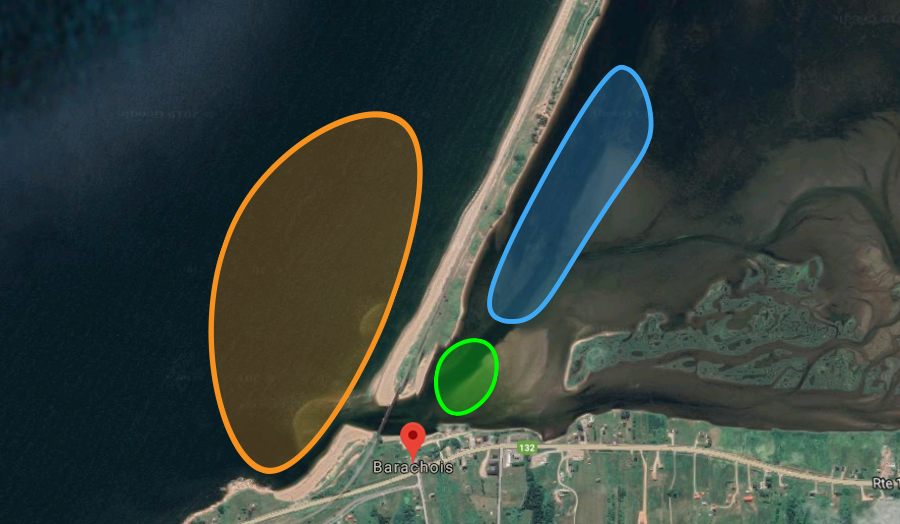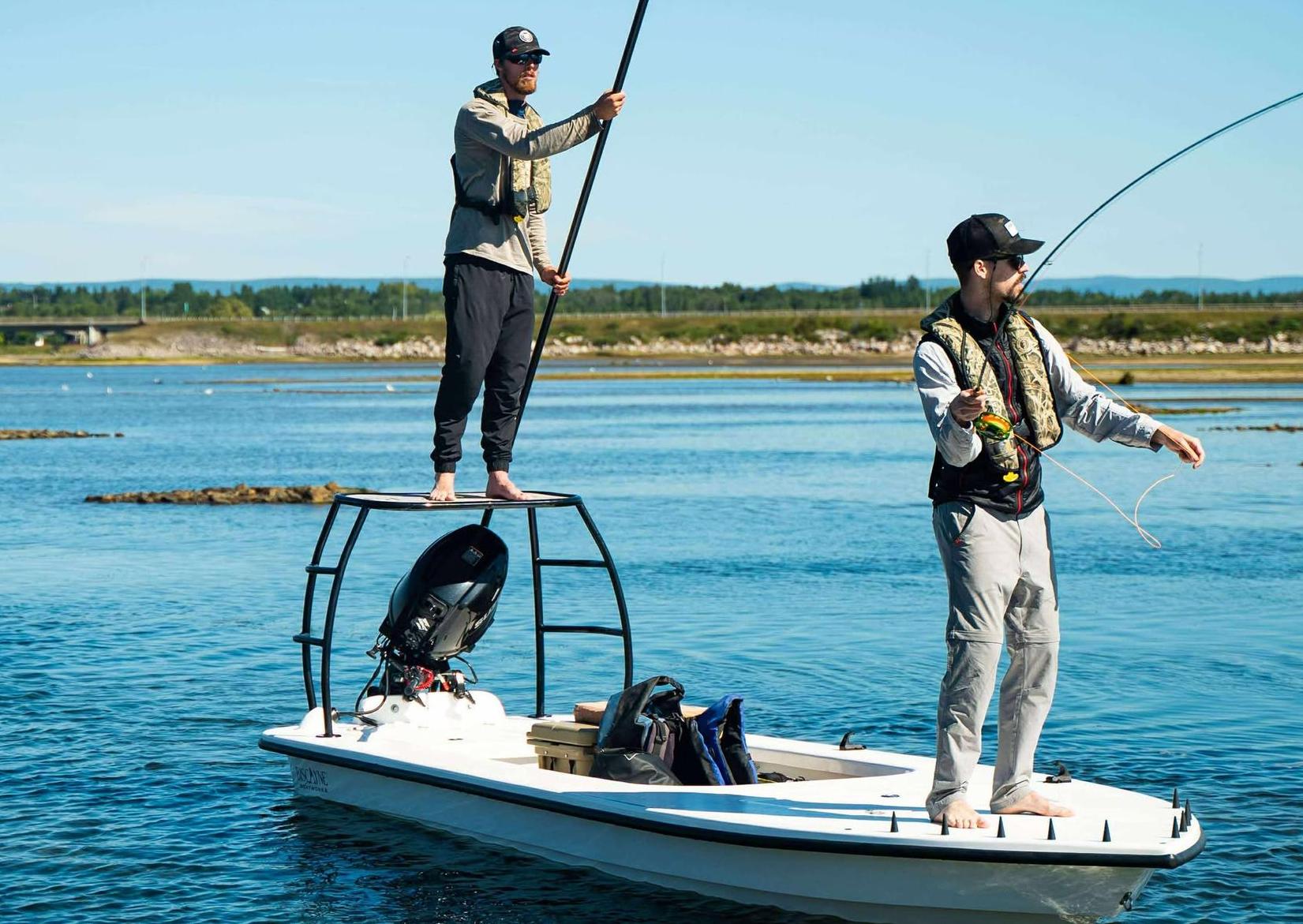There are multiple saltwater marshes along the Saint Lawrence River and in the Chaleur Bay. They are also called lagoons or tidal lagoons, but people from the Gaspé Peninsula call them “barachois” referring to the French word. The barachois offers an amazing ecosystem and one of the best fishing experiences when fish are present.
The barachois fishermen will have to fish a lot of hours, explore different areas and adjust to the changing conditions. On the other hand, with effective analysis and various fishing techniques, we can be successful with a certain consistency. To do this, we must understand how the stripers move in the barachois. Generally speaking, striped bass stays in the sea during low tide. As the tide rises, stripers will enter the barachois to eat. Other fish will do the same. Sometimes stripers enter the barachois to eat the species that are already in it, or they chase other fish that enter the area to eat. This will influence the choice of our fly. The more the tide rises, the more the stripers move deeper into the barachois. It all depends on the depth of the water and where the food is. When the tide goes down, the striped bass will return to the sea. The concept is very simple but requires some investigation. To push the concept further, here is the analysis of the Malbaie River barachois, located in the town of Barachois.

Orange Area
The orange area represents the sea and the inlet. The inlet can be fish like a river mouth as explained in the red area of the article "How to fish a bay?". Stripers will especially hang out on the seaside when the tide is low, but they can be there anytime. The low tide allows the barachois to empty, which carries food into the sea. Fish will be present in greater numbers near the mouth of the inlet when the sea is about to rise. Some of them will then begin to enter the barachois. This is when the inlet becomes an excellent place to intercept stripers entering the barachois. The more the tide rises, the less the inlet is productive since the stripers are further in the marsh. The breach will be productive again once the tide is falling, usually 1 to 3 hours before low tide, as the striped bass return to the sea. On figure 1, we can also see the creation of sandbanks at the mouth of the barachois. This tells us that it may be possible to step onto the sandbank to fish further. In addition, the sandbank creates a structure that can act as an ambush between the shallower and the deeper areas, especially if there is a sharp, non-gradual change in depth. The stripers will wait in the deeper area for small fish like a sand eel to arrive from the sandbanks and eat them. Also, stripers that swim along the coast tend to go around the sand point rather than go over it. This is why I like to fish the outside of the sandbank at low tide.
Green Area
The green area is where the two main currents meet. The current of the barachois empties towards the sea. When the tide rises, the current coming from the sea becomes stronger and stronger. At some point, the two currents are of similar forces, which can create a rip in the water or a whirlpool. Food from the sea and the barachois is then concentrated in this sector. If the currents are strong enough, small fish and shellfish are stuck in this meeting point and it becomes a real hunting ground for striped bass.
To fish in this area, an intermediate sinking line with a natural density fly is ideal. These flies can be an imitation of sand eels, a bulkhead or sand shrimp. We just have to cast straight into the rip and let the current work for us. The fly will move in all directions like a fish being carried away. All we have to do is keep the tension on the fly and wait for the bite. If the current is not strong enough, we can strip the fly to make it look alive.
Blue Area
The blue area represents where striped basses are most likely to be at high tide. Stripers will either be on the move or sitting in the current waiting for food to pass. That’s why it’s important to cover water. The strategy is simple: all we have to do is take a step after every cast, just like how we fish for salmon. While the fly is drifting, we must have a 360-degree view as striped bass can be everywhere. Sometimes fish are in less than 10 inches of water. In that case, small two-to-three-inches flies with a longer leader (9 to 12 feet) may be needed to cast at bass without spooking them.
Back to figure 1, deeper channels are easy to spot because they are darker. These channels concentrate fish movements. If there is an encounter between two or more channels, there is a good chance that it will create a pocket. This pocket could be very productive. If there is no pocket, the encounter may create a concentration of food and this is also a productive fishing spot. The barachois often changes shape, which is why reading the map only gives an overview. It's up to us to walk the area and get to know it. When the tide is low, it’s the perfect time to observe and walk a barachois. Some barachois have a muddy and very soft bottom and can be dangerous. Be safe and don't take unnecessary risks while prospecting. Daytime prospection is necessary if we want to fish it efficiently and safely at night. A few years ago, I remember fishing this barachois under a sky full of northern lights. Not only is fishing often better at night, but the place offers incredible moonlight scenery.

Reference:
Tabory, Lou, 2e édition (2011), Inshore Fly Fishing: A Pioneering Guide To Fly Fishing Along Cold-Water Seacoasts, ROWMAN & LITTLEFIELD, 384 pages.
Caudale Podcast : https://www.boutique-caudale.com/podcast-caudale

